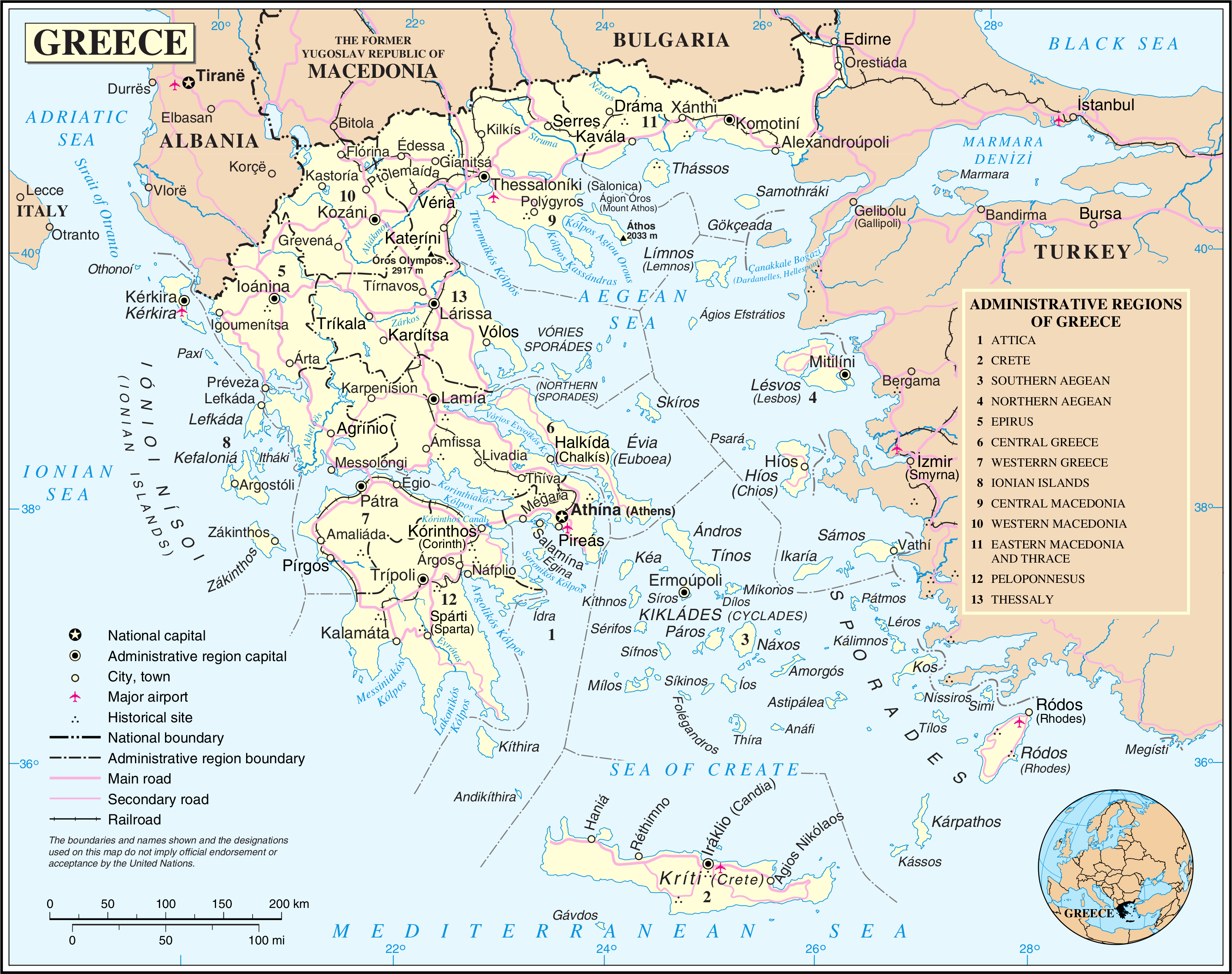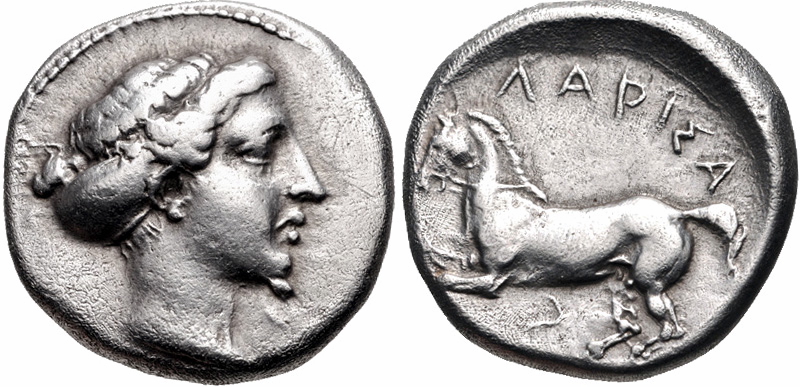|
Administrative Divisions Of Greece
Following the implementation on 1 September 2019 of the Kleisthenis I Programme, the administrative divisions of Greece consist of two main levels: the regions and the municipalities. In addition, a number of decentralized administrations overseeing the regions exist as part of the Ministry of the Interior, but are not part of local government. The old prefectures were either abolished and divided or transformed into regional units in 2011 by Kallikratis Plan. The administrative regions are divided into regional units which are further subdivided into municipalities. The Eastern Orthodox monastic community on Mount Athos is an autonomous self-governing entity. Administrative divisions Decentralized administrations The first level of administrative division is composed of the new decentralized administrations (αποκεντρωμένες διοικήσεις, ''apokentroménes dioikíseis''), comprising two or three regions (except for Attica and Crete), run b ... [...More Info...] [...Related Items...] OR: [Wikipedia] [Google] [Baidu] |
Decentralized Administration Of Macedonia And Thrace
The Decentralized Administration of Macedonia and Thrace () is one of the seven Decentralized administrations of Greece, decentralized administrations of Greece, consisting of the Administrative regions of Greece, peripheries of Central Macedonia and Eastern Macedonia and Thrace. The region is centered in the metropolitan city of Thessaloniki in Central Macedonia. Formation and tasks Decentralized Administrations were created in January 2011 as part of a far-reaching reform of the country's administrative structure, the Kallikratis reform (Law 3852/2010). They enjoy both administrative and financial autonomy and exercise devolved state powers in urban planning, environmental policy, environmental and energy policy, forestry, Human migration, migration and citizenship. Beyond that, they are tasked with supervising the first and second-level self-governance, self-governing bodies: the Municipalities of Greece, municipalities and Administrative regions of Greece, regions, in this c ... [...More Info...] [...Related Items...] OR: [Wikipedia] [Google] [Baidu] |
Modern Regions Of Greece
The regions of Greece () are the country's thirteen second-level administrative divisions of Greece, administrative entities, counting decentralized administrations of Greece as first-level. Regions are divided into regional units of Greece, regional units, known as prefectures of Greece, prefectures until 2011. History The current regions were established in July 1986 (the presidential decree officially establishing them was signed in 1987), by decision of the interior minister, Menios Koutsogiorgas, as second-level administrative entities, complementing the Prefectures of Greece, prefectures (Law 1622/1986). Ν.1622/86 "Τοπική Αυτοδιοίκηση - Περιφερειακή Ανάπτυξη - Δημοκρατικός Προγραμματισμός", (ΦΕΚ 92/τ.Α΄/14-7-1986) Before 1986, there was a traditional division into broad geographic regions of Greece, historical–geographical regions (γεωγραφικά διαμερίσματα), which, however, was of ... [...More Info...] [...Related Items...] OR: [Wikipedia] [Google] [Baidu] |
Monastic Community Of Mount Athos
The monastic community of Mount Athos is an Eastern Orthodox community of monks around Mount Athos, Greece, who hold the status of an autonomous region with its own sovereignty within Greece and the European Union, as well as the combined rights of a decentralized administration, a region, a regional unit and a municipality, with a territory encompassing the distal part of the Athos peninsula including Mount Athos. The bordering proximal part of the peninsula belongs to the regular Aristotelis municipality in Central Macedonia. In modern Greek, the community is commonly referred to as (), translating to 'Holy Mountain', while () is used to denote the physical mountain and () in respect to the peninsula. The community includes 20 monasteries and the settlements on which they depend. The monasteries house around 2,000 Eastern Orthodox monks from Greece and many other countries, including Eastern Orthodox countries such as Serbia, Romania, Moldova, Georgia, Bulgaria, Montenegro ... [...More Info...] [...Related Items...] OR: [Wikipedia] [Google] [Baidu] |
Heraklion
Heraklion or Herakleion ( ; , , ), sometimes Iraklion, is the largest city and the administrative capital city, capital of the island of Crete and capital of Heraklion (regional unit), Heraklion regional unit. It is the fourth largest city in Greece with a municipal population of 179,302 (2021) and 211,370 in its wider metropolitan area, according to the 2011 census. The greater area of Heraklion has been continuously inhabited since at least 7000 BCE, making it one of the oldest inhabited regions in Europe. It is also home to the ancient Knossos Palace, a major center of the Minoan civilization dating back to approximately 2000-1350 BCE, often considered Europe's oldest city. The palace is one of the most significant archaeological sites in Greece, second only to the Parthenon in terms of visitor numbers. Heraklion was Europe's fastest growing tourism destination for 2017, according to Euromonitor, with an 11.2% growth in international arrivals. According to the ranking, Herakl ... [...More Info...] [...Related Items...] OR: [Wikipedia] [Google] [Baidu] |
Decentralized Administration Of Crete
The Decentralized Administration of Crete () is one of the seven decentralized administrations of Greece, solely consisting of the region of Crete. Its seat is in Heraklion. Formation and tasks Decentralized Administrations were created in January 2011 as part of a far-reaching reform of the country's administrative structure, the Kallikratis reform (Law 3852/2010). They enjoy both administrative and financial autonomy and exercise devolved state powers in urban planning, environmental and energy policy, forestry, migration and citizenship. Beyond that, they are tasked with supervising the first and second-level self-governing bodies: the municipalities and regions, in this case the 24 municipalities of Crete and the region itself. Characteristics Covering an area of , ''Crete'' is one of the smallest of the seven decentralized administrations by area, second only to Attica. With an overall population of it is also the third smallest decentralized administration by populatio ... [...More Info...] [...Related Items...] OR: [Wikipedia] [Google] [Baidu] |
Piraeus
Piraeus ( ; ; , Ancient: , Katharevousa: ) is a port city within the Athens urban area ("Greater Athens"), in the Attica region of Greece. It is located southwest of Athens city centre along the east coast of the Saronic Gulf in the Athens Riviera. The municipality of Piraeus and four other suburban municipalities form the regional unit of Piraeus, sometimes called the Greater Piraeus area, with a total population of 448,051. At the 2021 census, Piraeus had a population of 168,151 people, making it the fourth largest municipality in Greece and the second largest (after the municipality of Athens) within the Athens urban area. Piraeus has a long recorded history, dating back to ancient Greece. The city was founded in the early 5th century BC, when plans to make it the new port of Athens were implemented: A prototype harbour was constructed, which resulted in concentrating in one location all the import and transit trade of Athens, along with the navy's base. During the ... [...More Info...] [...Related Items...] OR: [Wikipedia] [Google] [Baidu] |
Decentralized Administration Of The Aegean
The Decentralized Administration of the Aegean () is one of the seven decentralized administrations of Greece, consisting of the regions of North Aegean and South Aegean. Seated in Piraeus, it is currently led by Acting Secretary-General Nikos Theodoridis. Formation and tasks Decentralized Administrations were created in January 2011 as part of a far-reaching reform of the country's administrative structure, the Kallikratis reform (Law 3852/2010). They enjoy both administrative and financial autonomy and exercise devolved state powers in urban planning, environmental and energy policy, forestry, migration and citizenship. Beyond that, they are tasked with supervising the first and second-level self-governing bodies: the municipalities and regions, in this case the 43 municipalities of the Aegean and the two regions themselves. Characteristics The Decentralized Administration of the Aegean is seated outside its own territory in Piraeus, Athens. It is however the most decentrali ... [...More Info...] [...Related Items...] OR: [Wikipedia] [Google] [Baidu] |
Patras
Patras (; ; Katharevousa and ; ) is Greece's List of cities in Greece, third-largest city and the regional capital and largest city of Western Greece, in the northern Peloponnese, west of Athens. The city is built at the foot of Mount Panachaikon, overlooking the Gulf of Patras. As of the 2021 census, the municipality of Patras has a population of 215,922, while the urban population is 173,600. The core settlement has a history spanning four millennia. In the Roman period, it had become a cosmopolitan center of the eastern Mediterranean whilst, according to the Christian tradition, it was also the place of Saint Andrew's Christian martyr, martyrdom. Dubbed as Greece's "Gate to the West", Patras is a commercial hub, while its busy port is a nodal point for trade and communication with Italy and the rest of Western Europe. The city has three public universities, hosting a large student population and rendering Patras an important scientific centre with a field of excellence ... [...More Info...] [...Related Items...] OR: [Wikipedia] [Google] [Baidu] |
Decentralized Administration Of Peloponnese, Western Greece And The Ionian
The Decentralized Administration of Peloponnese, Western Greece and the Ionian () is one of the seven decentralized administrations of Greece, consisting of the regions of Peloponnese, Western Greece and the Ionian Islands. Its seat is in Patras, Western Greece, and it is currently headed by Acting Secretary-General Dionysios Panagiotopoulos. Formation and tasks Decentralized Administrations were created in January 2011 as part of a far-reaching reform of the country's administrative structure, the Kallikratis reform (Law 3852/2010). They enjoy both administrative and financial autonomy and exercise devolved state powers in urban planning, environmental and energy policy, forestry, migration and citizenship. Beyond that, they are tasked with supervising the first and second-level self-governing bodies: the municipalities and regions, in this case the 52 municipalities of Peloponnese, Western Greece and the Ionian Islands, and the three regions themselves. Characteristics Cover ... [...More Info...] [...Related Items...] OR: [Wikipedia] [Google] [Baidu] |
Larissa
Larissa (; , , ) is the capital and largest city of the Thessaly region in Greece. It is the fifth-most populous city in Greece with a population of 148,562 in the city proper, according to the 2021 census. It is also the capital of the Larissa regional unit. It is a principal agricultural centre and a national transport hub, linked by road and rail with the port of Volos, the cities of Thessaloniki and Athens. The municipality of Larissa has inhabitants, while the regional unit of Larissa reached a population of (). Legend has it that Achilles was born here. Hippocrates, the "Father of Medicine", died here. Today, Larissa is an important commercial, transportation, educational, agricultural and industrial centre of Greece. The city straddles the Pineios river and N.-NE. of the city are the Mount Olympus and Mount Kissavos. Mythology According to Greek mythology, it is said that the city was founded by Acrisius, who was killed accidentally by his grandson, Perseus. There l ... [...More Info...] [...Related Items...] OR: [Wikipedia] [Google] [Baidu] |
Decentralized Administration Of Thessaly And Central Greece
The Decentralized Administration of Thessaly and Central Greece () is one of the seven Decentralized administrations of Greece, decentralized administrations of Greece, consisting of the Administrative regions of Greece, peripheries of Thessaly and Central Greece (administrative region), Central Greece. Seated in Larissa, Thessaly, it is currently led by Acting Secretary-General Ilias Tseligas. Formation and tasks Decentralized Administrations were created in January 2011 as part of a far-reaching reform of the country's administrative structure, the Kallikratis reform (Law 3852/2010). They enjoy both administrative and financial autonomy and exercise devolved state powers in urban planning, environmental policy, environmental and energy policy, forestry, Human migration, migration and citizenship. Beyond that, they are tasked with supervising the first and second-level self-governance, self-governing bodies: the Municipalities of Greece, municipalities and Administrative regions ... [...More Info...] [...Related Items...] OR: [Wikipedia] [Google] [Baidu] |




